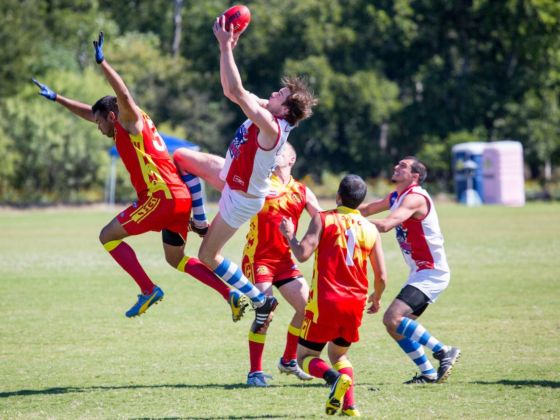Things can get heated in the “soccer” versus “football” debate. Though most of the world argues in favor of the latter, or some translation thereof, North Americans have at least one ally in Australians, whose idea of “football” calls to mind a separate sport entirely.
Australian rules football is a contact sport played with a spheroid ball on a large oval cricket pitch. Lauré Kwoka, a director of operations for the Sacramento Australian Football Club (SAFC) who also plays for the Sacramento Suns, describes the sport as a mix between soccer and rugby. “The positions are spread out like in soccer where there are forwards, mids, and backs,” she says. “But then there’s tackling and no pads.” Later, she compared its fast pace to hockey and likened a footy ball to the offspring of an American football and rugby ball.




